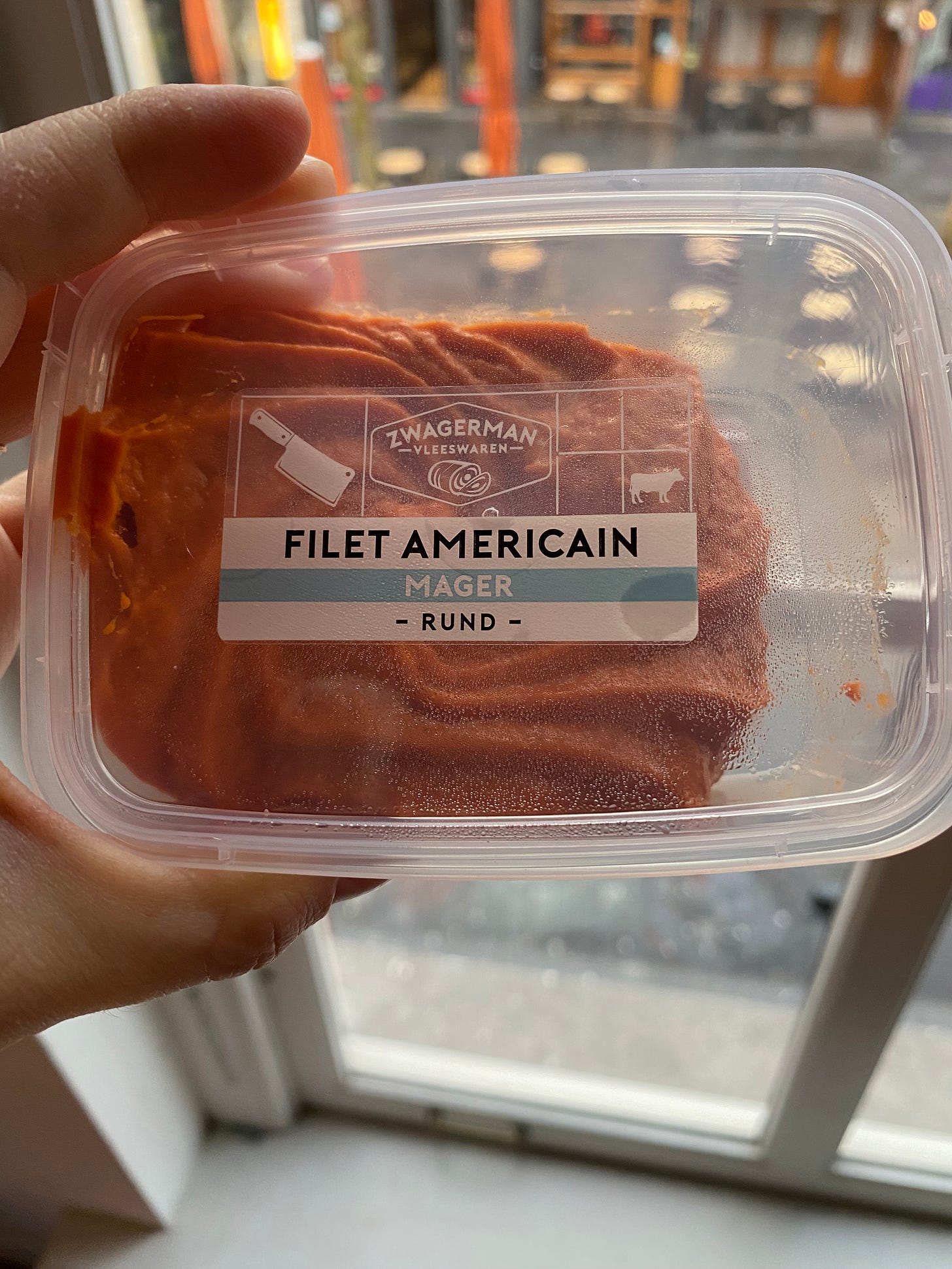What's the deal with Dutch food?
Chocolate sprinkles and watery tea
Although I am quite at home in Nice, whenever someone asks me where I’d move next, I have an answer ready to go: The Netherlands. There’s something about that flat, green landscape dotted with windmills, and cities with architecture only slightly quirkier than the people that really draws me in.
Luckily, I get my fix about once a year when I travel for work to the charming small town of Breda in the south of the country. I’ve spent a number of weeks there over the years, and I’ve learned a few things about Dutch culture in the process (namely, always carry an umbrella, Visa and Mastercard are hardly accepted anywhere, and don’t try to buy pants in Dutch stores unless you’re from a neighboring tall-people country).
But what I can’t seem to wrap my head around is the food. There seem to be very few Dutch restaurants in the country (a telling sign), so what I’ve experienced has mostly come from my Dutch colleagues graciously buying me the grocery store classics that they eat at home. Let me share my thoughts on a few staples of Dutch cuisine:
Cheese
Yes, cheese is obvious, but I truly believe Dutch cheese is on par with French or Italian cheeses. In fact, the cheese-flavored snacks I tried in the Netherlands were far superior to those elsewhere. What really gets me, though, is the ability to choose the same sliced, hard cheese in about seven different levels of aging, ranging from infantile to rebellious teen, mature 40-something, and downright geriatric (in reality, the names are less exciting, but the principle stands).
Sandwiches
You can’t talk about cheese without mentioning the Dutch love of sandwiches. I paid good money for a KLM flight to Amsterdam, and the only meal served on board was a sandwich consisting of one (1) slice of Gouda between two pieces of brown bread (I think there was supposed to be a whiff of fig jam in there, but it didn’t show up to work that day). The packaging exclaimed how proud the airline was to provide this taste of the Netherlands! To be fair, Dutch sandwich bread is quite soft and delicious.
Filet Americain
If you don’t want cheese on your bread, might you consider filet americain? This meat-based spread of a dubious orange color has a French name and absolutely no relationship to the United States. It’s a grocery store pâté made from raw beef, onions, paprika, Tabasco, and mayo, although the flavor hardly gives away the ingredients.
Chocolate sprinkles
Once you’re done with your filet americain, it’s time for something sweet. That’s where chocolate shavings known as Hagelslag come in. Simply pour them on a slice of buttered bread for endless fun! Please note that Hagelslag is not just for children; serious Dutch professionals eat chocolate sprinkles for lunch at work.
Tea
Sure, a lot of countries drink tea, but it’s the Dutch tea-making process that really stands out. First, get yourself a tall glass and fill it with enough boiling water so that you can’t really pick it up without burning your fingers. Then, dip the tea bag inside for three milliseconds so that a hint of color appears but zero flavor is transferred. Now you can leave the tea bag lying on the counter so your friends can use it later!
Dutch people say they do this because their tea bags are meant to make a full pot. No comment.
Peanuts
Most people know that the Netherlands makes good cheese, but the Dutch relationship with peanuts might come as more of a surprise. Peanuts were introduced to Dutch cuisine by way of former colonies Indonesia and Suriname, two peanut-producing countries on opposite sides of the globe.
Peanuts are prominently featured at borrel—the Dutch equivalent of the aperitif. In the grocery store, you’ll find plenty of peanuts coated in various spice mixes advertised as the perfect borrel snack.
Dutch peanut butter, called pindakaas (literally “peanut cheese”—go figure), is far superior to anything sold in the U.S. or elsewhere in Europe. It doesn’t contain sugar, yet its natural sweetness propels me to use my checked bag allowance to bring oversized jars of the Calvé crunchy stuff back to France.
Roti
Peanuts aren’t the only culinary influence from Suriname, the South American country that gained independence from the Netherlands in 1975. No trip to the Netherlands is complete without a taste of roti: yellow flatbread accompanied by a curry sauce consisting of chicken, potatoes, and green beans. Or go for another dish from this unique cuisine that blends flavors from the country’s Chinese, Indian, Creole, and Javanese ethnic groups.
Kroketten
At first glance, you might think the Dutch kroket is fairly similar to other European versions of a deep-fried snack with a similar name. But yet again, the Dutch have managed to make it their own. Dutch kroketten are often as long as a hot dog, making them the perfect size to place inside a white bread roll and slather with mustard. While a beef filling is most common, you can find a number of wacky flavors on grocery store shelves, like goulash, curry, or tuna. Instead of buying them in the store, however, a real Dutch experience is to buy them from a vending machine built into a wall—hot and ready to go!
Honorable mention:
Dutch apple pie – If you’re in Amsterdam, try Winkel 43!
Dutch people (and others) – tell me: What am I totally wrong about? What did I miss? What Dutch favorites should I try next? Let me know in the comments!









Olliebollen are the best donuts ever. As Xmas approaches olliebollen pop ups will be all over Amsterdam. Oh! And Indonesian food is the best around town!
Love this! Made me chuckle. I live in neighbouring Belgium and we have some Calve peanut butter in our larder. So interesting to now understand its history! 🥜